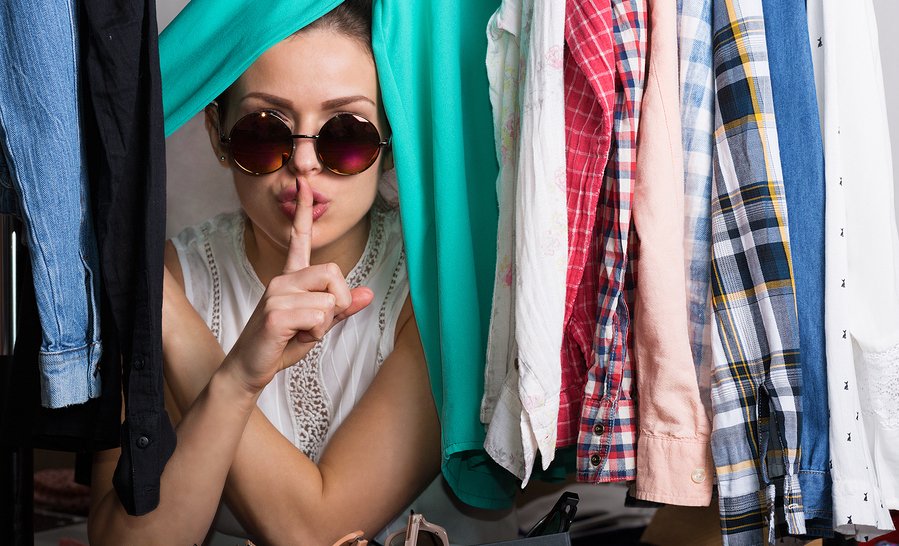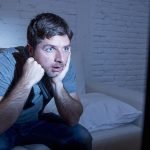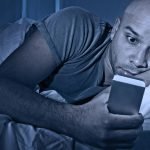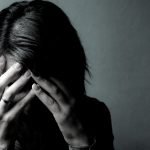A friend of mine, let’s call her Penny, has a high-profile job in the environmental field that requires her to spend hours daily in phone meetings. Since Penny works from home, she can participate in those meetings while wearing pajamas, eating granola, and cruising the internet. She’s savvy enough to respond to her colleagues at appropriate times, to half-listen even as she does other things, to hide the fact that while her meeting-mates discuss climate change, she’s looking for real estate in Belize. And in fact, that’s what Penny does—she looks for real estate, day after day, all over the world. She never buys, but she always looks.
Nancy, in contrast, hits the computer early each morning to see what’s new on Zulily, and on a typical day, her credit card gets a workout. Boxes arrive at her door daily, giving her the thrill of unpacking, trying on whatever has arrived, and finding closet space for the new acquisitions.
Sound familiar? According to a 2006 Stanford study published in the journal Psychiatric Times, one in every 20 adults has “Compulsive Buying Disorder.” 1 “Compulsive Buying Disorder Affects 1 in 20 Adults, Causes Marked Distress.” 1 December 2006. Psychiatric Times. 1 June 2017. http://www.psychiatrictimes.com/articles/compulsive-buying-disorder-affects-1-20-adults-causes-marked-distress But again, that was back in 2006. In the intervening 10 or so years, internet advertising has hit its stride, and most sources agree that prevalence has increased. The internet makes it so easy. You don’t even need money, since all is done via credit card or PayPal, and the options seem endless. Plus, for those with addictive tendencies, the anonymity of online shopping allows for the secrecy that addicts crave. A 2008 study estimated that about one in every 11 people now has compulsive shopping habits, while a 2016 paper put the number up as high as 16 percent, depending on the population tested.2 Maraz, Aniko; Griffiths, Mark D.; and Demetrovics, Zsolt. “The prevalence of compulsive buying: A meta-analysis.” 1 March 2016. Eötvös Loránd University. 1 June 2017. http://hungary.pure.elsevier.com/en/publications/the-prevalence-of-compulsive-buying-a-meta-analysis.”
What constitutes compulsive shopping, anyway? If you enjoy an occasional, or even a regular spree but have the budget for it and no regrets, you’re probably in the clear, psychiatrically. Unlike regular shoppers, compulsive shoppers consistently overspend, get themselves in trouble financially, cause emotional pain for themselves and others because of their shopping, and get little pleasure from their purchases, once acquired. The act of shopping may be used as a self-medication, a way of tranquilizing negative feelings and distracting attention away from real-life problems. As with other addictions, secrecy and lying take center stage. The compulsive shopper hides purchases from family and friends and denies spending any money. When the budget blows up and the shopper tries to abstain from shopping, that person usually can’t control the buying impulse.
According to expert Dr. Donald Fraser of the Internal Detoxification Unit at McGill University Health Center in Canada, “To have a diagnosis of compulsive buying disorder, there has to be some sort of functional impairment. The person spends so much time looking for sales that it interferes with their daily activities. For instance, they do not pick up their children from school or they do not take a shower because of fear they will miss a flash sale.”3 “Your brain on shopping—A look at compulsive buying disorder.” 7 December 2016. McGill University Health Center. 1 June 2017. http://muhc.ca/newsroom/article/your-brain-shopping-look-compulsive-buying-disorder
Is compulsive shopping actually a psychiatric disorder? Not officially, although experts agree that compulsive shopping often is a type of obsessive-compulsive behavior or akin to an impulse control disorder, with close ties to other behavioral addictive disorders. The addiction is accompanied by depression and anxiety about two-thirds of the time.4 “Shopping Addiction Symptoms, Causes, and Effects.” PsychGuides.com. 1 June 2017. http://www.psychguides.com/guides/shopping-addiction-symptoms-causes-and-effects/ Anxiety and depression feed the urge to shop; the thrill of shopping temporarily dulls negative emotions; and after shopping, when the high is gone and the bills are due, depression and/or anxiety result and the cycle begins again. The results show up not only financially, but potentially in disrupted relationships, loss of job (from shopping at work), and insomnia plus compromised physical and mental health from the stress of it all.
Experts say that one of the reasons people become shopaholics is that there’s a wide gap between self-perception and the desired self-image. A person wants to be thin and classy but is round and frumpy. Shopping seems a short path to achieving the dream. But as with other addictions, there are biological factors as well. Shopping addicts get a rush of dopamine, the “feel-good” brain drug, upon making a purchase. When the dopamine high wears off, as it will in short order, the addict feels compelled to shop again to get another rush.
By the way, contrary to what you might think, studies show that men are afflicted almost as often as women. But men shop for status, unlike women, who shop for emotional fulfilment and to boost self-image. Whereas women shop for things with which to adorn themselves (clothing, jewelry, cosmetics), men more often look for toys to support their hobbies (e.g., electronics and sports equipment), and their purchases tend to be more expensive. Women enjoy shopping in stores and on browse-and-buy sites, but men more often enjoy competitive auctions. Plus, a recent Brazilian study found that male compulsive shoppers tend to have higher rates of co-addictions (substance abuse, sex addiction, gambling addiction) and other psychiatric disorders in addition to the shopping problem, but that may not hold true outside of Brazil.5 De Mattos, Christiana Nicoli, et al. “Gender Differences in Compulsive Buying Disorder: Assessment of Demographic and Psychiatric Co-Morbidities.” 1 December 2016. PLOS One. 1 June 2017. http://journals.plos.org/plosone/article?id=10.1371/journal.pone.0167365
Think you might have a compulsive shopping problem? The signs typically include using shopping to alter your mood, having strong, impulsive urges to buy something even when you don’t need anything, and feeling guilty or even hiding purchases after spending money. If you want to evaluate yourself, try this test.
As with other addictions, simply wanting to stop probably won’t work. Experts say psychotherapy is usually required, with cognitive behavioral therapy particularly effective. Also, joining 12-step groups for shopaholics may be useful. In addition, the pharmaceutical industry has cooked up a solution: the Alzheimer’s drug memantine. Although memantine has been found useful for halting compulsive shopping, it comes with the usual array of horrifying side effects, from possible seizures, to blood pressure increases, hallucinations, dizziness, headaches, nausea and so on.6 http://www.rxlist.com/namenda-side-effects-drug-center.htm A better bet might be to turn the credit cards over to someone trustworthy and take yourself to the gym on the way back from therapy.
References
| ↑1 | “Compulsive Buying Disorder Affects 1 in 20 Adults, Causes Marked Distress.” 1 December 2006. Psychiatric Times. 1 June 2017. http://www.psychiatrictimes.com/articles/compulsive-buying-disorder-affects-1-20-adults-causes-marked-distress |
|---|---|
| ↑2 | Maraz, Aniko; Griffiths, Mark D.; and Demetrovics, Zsolt. “The prevalence of compulsive buying: A meta-analysis.” 1 March 2016. Eötvös Loránd University. 1 June 2017. http://hungary.pure.elsevier.com/en/publications/the-prevalence-of-compulsive-buying-a-meta-analysis.” |
| ↑3 | “Your brain on shopping—A look at compulsive buying disorder.” 7 December 2016. McGill University Health Center. 1 June 2017. http://muhc.ca/newsroom/article/your-brain-shopping-look-compulsive-buying-disorder |
| ↑4 | “Shopping Addiction Symptoms, Causes, and Effects.” PsychGuides.com. 1 June 2017. http://www.psychguides.com/guides/shopping-addiction-symptoms-causes-and-effects/ |
| ↑5 | De Mattos, Christiana Nicoli, et al. “Gender Differences in Compulsive Buying Disorder: Assessment of Demographic and Psychiatric Co-Morbidities.” 1 December 2016. PLOS One. 1 June 2017. http://journals.plos.org/plosone/article?id=10.1371/journal.pone.0167365 |
| ↑6 | http://www.rxlist.com/namenda-side-effects-drug-center.htm |











